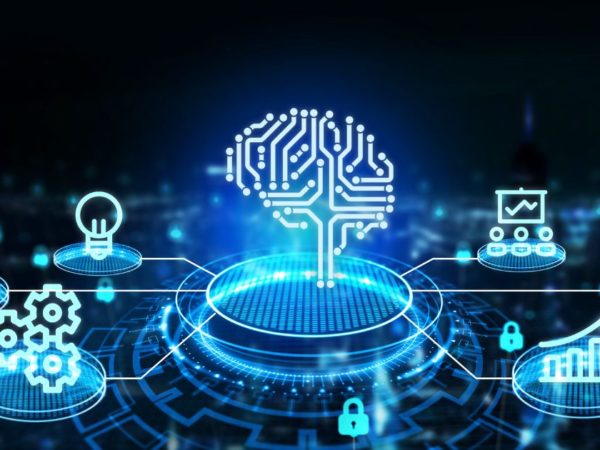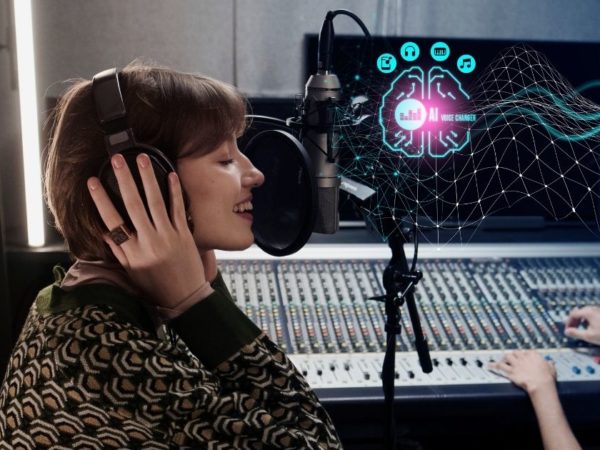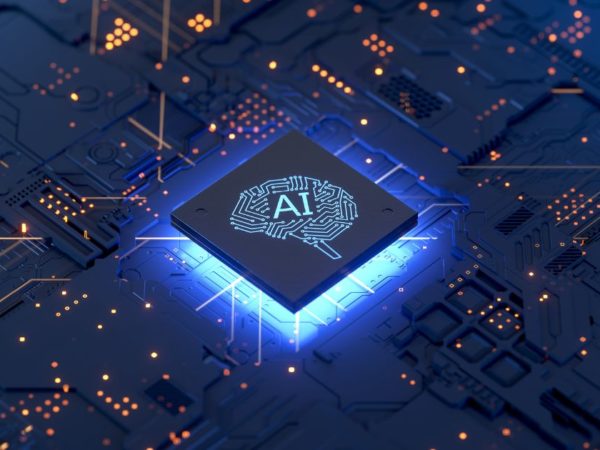New buzzwords and terms emerge almost daily in this digital age. One such term is Cognitive Computing, which is gaining immense popularity among individuals and organizations.
A cognitive system learns human behavior and reasoning at scale to naturally interact with them. In simple terms, it’s a computer science field that aims at creating intelligent machines capable of learning, reasoning, and understanding like humans.
Statistics suggest that the cognitive computing market, valued at $25.6 billion in 2021, is projected to reach $269.4 billion by 2030 at a CAGR of 29.7.
Cognitive computing platforms combine Machine Learning (ML), Natural Language Processing (NLP), reasoning, human-computer interaction, speech and vision recognition, and more robust technologies to simulate human thinking and interaction and improve decision-making.
In this blog, we’ll dive deeper into understanding cognitive computing. We’ll see how it works, its benefits, risks, and more.
So, read along to learn about this rapidly growing technology.
What is Cognitive Computing?
<img alt="YouTube video" data-pin-nopin="true" data-src="https://kirelos.com/wp-content/uploads/2023/03/echo/maxresdefault.jpg64008dc9210e2.jpg" height="720" nopin="nopin" src="data:image/svg xml,” width=”1280″>
Cognitive computing is a set of individual technologies that perform particular tasks to facilitate human intelligence.
In simple words, cognitive computing is a system that understands and interprets large volumes of data and uses them to make decisions, solve problems, and improve business outcomes.
It processes a vast amount of unstructured data, like images, text, and videos, to extract valuable and critical insights and better analyze this information. The best part about cognitive computing is that it learns and adapts from experience—improving its capabilities and performance with time.
Thus, cognitive computing helps in making better human decisions. A few essential applications of cognitive computing include:
- Fraud detection systems
- Speech recognition
- Face detection
- Virtual assistants
- Sentiment analysis
- Risk assessment
- Recommendation engines
Thus, organizations can make better-informed business decisions by leveraging intelligent insights and recommendations generated through cognitive computing.
How Does Cognitive Computing Work?
Cognitive computing combines cognitive and computer sciences and creates computer systems that understand and learns from natural language and reasoning and make human-like decisions.
And for this process, cognitive computing uses various advanced technologies, like NLP, ML, data mining, pattern recognition, and computer vision, to mimic human-like cognitive processes.
The long-term aim of cognitive computing is to facilitate the creation of automated IT models which can solve issues without human intervention.
Here’s a detailed explanation of how cognitive computing work:
- Data Ingestion: The step of the cognitive computing system process is the collection and ingestion of a huge amount of unstructured and structured data from several sources, like sensors, databases, social media, and the web.
- Natural Language Processing (NLP): Once it ingests the data, the cognitive computing systems use NLP algorithms to extract the data’s context and meaning and understand human language, including syntax, pragmatics, and semantics.
- Machine Learning (ML): Cognitive computing systems use ML algorithms to learn from the extracted data and design models for the problem domain. It involves training the system on massive data, analyzing its performance, and continuously improving the model based on feedback.
- Reasoning Algorithms: Once cognitive computing builds the model, it uses reasoning algorithms for data analysis and making decisions based on the model’s knowledge. This process includes using the built model to infer new data and information, identify patterns, and make decisions.
- Prediction Analysis: Cognitive computing systems evaluate their prediction’s accuracy and adjust their algorithms and models to continuously learn and improve their performance based on feedback from new data and users.
- User Interaction: Cognitive computing systems offer a user interface that makes it easier for users to interact with the systems using NLP and receive recommendations and insights based on the system’s analysis and reasoning.
Thus, cognitive computing combines all the advanced technologies to create systems that interact with humans intuitively and more naturally to facilitate complex decision-making based on the data’s deep understanding.
Key Features of Cognitive Computing
Cognitive computing provides these key attributes and features to make sense of unstructured information and facilitate complex decision-making for humans.
- Adaptive Learning: Cognitive computing systems must be adaptive and capable of rapidly learning changing information with evolving requirements and goals. It processes ambiguous and dynamic data in real time to meet the needs of the surrounding data.
- Interactive: HCI or Human-Computer Interaction is an essential component of cognitive machines. Users must interact with cognitive computing machines and define their changing needs. Moreover, cognitive computing must also interact with other devices, processes, and cloud platforms.
- Stateful and Iterative: Cognitive computing systems should identify problems by pulling in additional data and asking questions if the query is incomplete or vague. The CC systems achieve this by maintaining data and information about similar previously occurred situations.
- Contextual: Cognitive computing systems should easily identify, understand, and extract contextual information, like time, domain, location, requirements, or a user’s profile, goals, or tasks. They draw information from several sources of structured and unstructured information and sensory, visual, and auditory data.
Benefits of Cognitive Computing
Here are the essential benefits of cognitive computing for businesses.
#1. Improved Data Collection and Interpretation
One of the biggest benefits of cognitive computing is that it analyzes vast data patterns and mimics human behavior, like learning and deduction and interpreting structured and unstructured data.
This analysis is then used to improve the internal process’s visibility, boosting customer preferences and loyalty and how the products and services are received.
#2. Error Detection and Troubleshooting
When applied to the technological environment, cognitive computing concepts make it easier to accurately and quickly detect issues and fraudulent activities in business processes and uncover business solutions and opportunities.
#3. Informed Decision-Making
Cognitive computing’s data collection and analysis capabilities allow it to make more strategic and informed decision-making—resulting in smarter financial decisions, much more efficient business processes, improved efficiency, and cost-saving.
#4. Customer Retention
Cognitive computing provides a much more informed and helpful customer-to-technology experience, boosting customer interaction and satisfaction and improving customer retention.
#5. Improved Cybersecurity
Cognitive computing can help companies and businesses identify and respond to cybercriminal activities and online threats in real-time with the help of advanced analytics tools and technologies.
Cognitive computing improves business cybersecurity in the following ways:
- Advanced threat intelligence
- Real-time threat detection
- Predictive analytics
- Behavior analytics
- Automated incident response
Thus, cognitive computing capabilities help businesses proactively prevent cybercriminal activities and reduce the potential security threats and their damage to businesses.
#6. Enhanced Employee Collaboration
Cognitive computing helps businesses and companies improve employee collaboration by offering insights and information—allowing teams to work much more efficiently.
How Can Cognitive Computing Enhance Human Expertise?
In certain areas, humans may fail to analyze vast amounts of data or issues that may not be as apparent to humans.
This is where cognitive computing plays a more significant role in enhancing human expertise by providing advanced analytics technologies for more excellent business results.
Here’s how cognitive computing can enhance, accelerate, and scale human intelligence and expertise:
- It understands natural human language through sensory data and interacts with humans naturally, providing accurate and non-biased advice to the problems.
- It quickly identifies potential risks with the help of data-driven insights and analysis—allowing humans to make better decisions based on evidence and facts.
- It helps humans address complex problems and resolve their root causes while developing the right solutions.
- It helps improve operational efficiency by offering progressive support to humans and businesses.
- Cognitive computing automates mundane and repetitive tasks, freeing human resources and allowing them to focus on more complex tasks requiring human expertise and unique skills.
- It helps personalize the human experience by analyzing human behavioral patterns and preferences to provide hyper-personalized recommendations and suggestions.
Well, many argue that even Artificial Intelligence or AI technologies help automate repetitive processes, improve personalization, and make the lives of humans much easier—so how is cognitive computing exactly different from Artificial Intelligence? Let’s find out.
Cognitive Computing Vs. Artificial Intelligence
While the technologies behind Artificial Intelligence and Cognitive computing are similar, they differ in their concepts, focus, and capabilities.
Here are the fundamental differences between cognitive computing and Artificial Intelligence.
| Artificial Intelligence | Cognitive computing |
| AI’s basic use case is implementing the best algorithm and augmenting human thinking to solve complex problems. | On the other hand, cognitive computing focuses on mimicking human behavior, intelligence, and reasoning to solve complex problems. |
| AI systems learn from data to find patterns, make predictions, reveal hidden information, and take action to find a solution. | Cognitive computing systems analyze a large volume of data and understand and simulate natural human language and reasoning to find solutions to problems. |
| AI systems perform tasks requiring human intelligence, like speech recognition, visual perception, natural language processing, and decision-making. | Cognitive computing systems use models and algorithms inspired by the human brain’s working, including deep learning and neural networks. |
| AI systems make decisions on their own, minimizing human interference and role. | Cognitive computing supplement data and information for humans to facilitate decision-making and problem-solving. |
| AI is mostly used in finance, banking, healthcare, security, manufacturing, and retail sectors. | Cognitive computing is mostly used in the customer service, industries, and healthcare sectors. |
Thus, cognitive computing is a more specific approach to Artificial Intelligence that emphasizes human-like reasoning and interaction.
Since cognitive computing utilizes context more contextually using evidence-based information, this new-age technology is expected to be the next big thing in the intelligent living world.
The image suggests that the global cognitive computing market will be $49.36 billion by 2025.
However, as every coin has two sides, cognitive computing has its own risks and disadvantages, as discussed below.
Cognitive Computing Risks and Disadvantages
Here are a few cognitive computing challenges businesses encounter.
#1. Data Privacy and Security
Cognitive computing systems handle and rely on a large volume of data, making it challenging to maintain high data security and increasing data breach risks and privacy violations.
Since cognitive computing systems must handle a lot of sensitive data, organizations must consider and address data breaches and security issues and build a full-proof data security plan.
#2. Adoption
Adoption is an issue with any new technology.
Hence, organizations streamline the adoption process to ensure cognitive computing success by collaborating with stakeholders like technology developers, organizations, individuals, and the government.
#3. Meticulous Training Process
Users must undergo extensive data training to thoroughly understand the cognitive computing process and system. Hence, one of the primary reasons behind its slow adoption is its slow training process.
Each employee must review the cognitive computing system, making the process highly complex and expensive.
#4. Lack of Transparency
The complexity and difficulty in understanding the cognitive computing processes create a lack of transparency, making it difficult to understand how the system reached a particular prediction or decision.
#5. Bias
Cognitive computing systems learn from biased data, leading to biased outcomes and results. This results in discriminatory and unfair decision-making, which can have real-life consequences.
Hence, training these systems with unbiased information and evaluating their decision-making capabilities is essential.
#6. Human Interaction
While cognitive computing systems interact with humans to understand human behavior and reasoning, they still face challenges.
Humans have a wide range of communication styles, dialects, and languages, and trying to reason with them can often result in misunderstandings, errors, and incomplete information.
#7. Change Management
Overcoming change management is another common cognitive computing challenge.
Natural human behavior is that humans are typically resistant to change and new environments. Unfortunately, cognitive computing learns this human ability, making it difficult for these systems to handle change and increasing the fear that machines will soon replace humans.
#8. Data Quality Dependency
The quality of data cognitive computing systems use is crucial for their efficiency and accuracy.
Biased, incomplete, or inaccurate data significantly affects these systems’ performance and effectiveness.
#9. Lengthy Development Cycle
Cognitive computing systems take up much time to develop scenario-based applications. Implementing cognitive computing solutions across multiple industry segments is challenging without significant time and the right development teams.
Lengthy development cycles make it difficult for smaller organizations and companies to develop their own cognitive systems.
#10. Cost
Cognitive computing systems require a lot of capital investment, expertise, and infrastructure.
Hence, organizations must weigh all the cognitive computing benefits against the costs before investing in suitable systems.
Learning Resources
#1. Cognitive Computing: A Brief Guide for Game Changers
This concise report and guide to cognitive computing, published by Peter Fingar, comprise the rise of cognitive computing technology and emerging applications and their impact on industries and businesses worldwide.
The author shares his fast-paced and engaging journey with the key events, resources, and players involved in the era of cognitive computing. Thus, it’s a must-read for those who need deep insight into cognitive computing intelligence and how it’ll change lives globally.
#2. Cognitive Computing: Theory and Applications (Volume 35)
This top-rated and comprehensive guide to cognitive computing focuses on its theory and applications. It is written by internationally renowned experts, including Vijay V Raghavan, Venu Govindaraju, Venkat N. Gudivada, and C.R. Rao.
It includes using cognitive computing systems to manage renewable energy, machine learning models and algorithms, biometrics, data-driven speech algorithms, graph analytics, and cybersecurity.
#3. Cognitive Computing and Big Data Analytics
This book helps organizations and technologists understand the underlying cognitive computing concepts and technologies, from NLP algorithms to knowledge representation techniques.
This book also includes real-life implementations of emerging Qualcomm, Google, Amazon, and Hitachi projects.
#4. Cognitive Computing Recipes
This is one of the ideal books for enterprise architects and software engineers who want to understand deep learning and solve their AI and ML problems using real-world code examples.
Published by Adnan Massod and Adnan Hashmi, this book lets you learn to build production-ready solutions with the help of Microsoft Cognitive Services APIs, solve enterprise problems in NLP and computer vision, and apply deep learning using Microsoft Cognitive Toolkit (CNTK) and TensorFlow.
#5. IBM Watson for Artificial Intelligence & Cognitive Computing
This Udemy course is perfect if you want to learn to build smart AI, ML, and cognitive computing systems and applications with IBM Watson.
It explores IBM Watson API’s capabilities to choose the best features, build a customer case chatbot, extract metadata from text, and many more amazing things.
Final Words
While cognitive computing has yet to reach its full potential, its future implementation has many possibilities. For example, it helps humans make better decisions, automate redundant tasks, and offload their cognitive load.
This blog helps you understand the concept of cognitive computing, how it works, its benefits, and even its scope and applications for organizations.
Next, check out cloud computing interview questions and answers.



